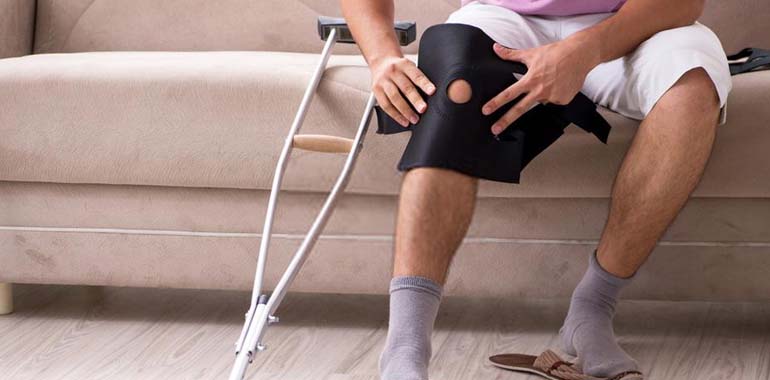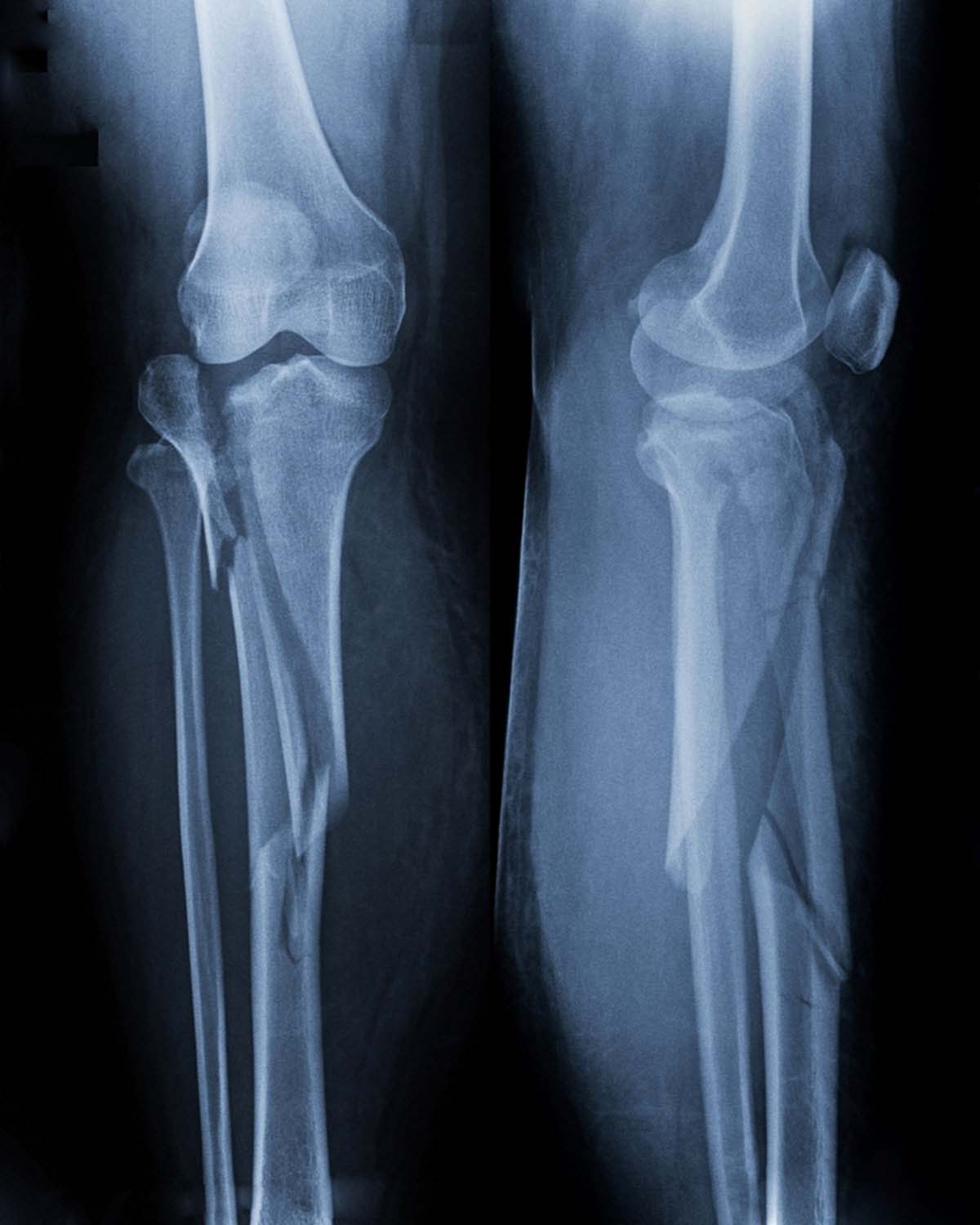
The knee, one of the largest joints in the body, is a complex joint. It is comprised of
the thigh bone (femur) connected to the shin bone (tibia) via numerous ligaments, which also
provide stability. The kneecap (patella) articulates with the femur, while the fibula is attached to
the tibia.
The ends of the femur, tibia and knee cap is covered by cartilage. There are 2 C-shaped
shock absorbers between the femur & tibia called medial & lateral meniscus.
The ligaments - anterior & posterior cruciate - prevent the tibia from sliding forward or
backward on the femur. The medial & lateral collateral ligaments prevent the side to side
movement.
Tendons connect the knee bones to the muscles around the leg & thigh and move the knee
joint.
Fractures of the lower end of thigh bone (distal femur), upper end of tibia (proximal tibia) or the knee cap (patella) constitute knee fractures.
Knee fractures occur due to high energy accidents(road traffic, sporting incidents, fall for height, etc). In the elderly they may also occur via low force impact in osteoporotic bones.
Some of the common symptoms of knee fractures include:

Nonoperative: Certain types of knee fractures are amenable to treatment via casts/splints/braces. This is possible in minimally displaced fractures or when the patient is not fit to undergo surgery
Internal fixation: Most knee fractures will be fixed using either plates with screws, only screws, wires or nails. This surgery stabilises the fractures in an optimal position allowing them to heal.
Knee Replacement: A small subset of knee fractures may need to undergo a complex primary knee replacement if the pattern and complexity of injury necessitates the same.
External Fixation: This type of surgery, via rod fixators or ring fixators, may be needed if the injury is open or if there is excessive swelling or in a severely injured patients. This is usually a temporary method of fixation.
Knee fracture treatment involves multimodal care especially in the elderly. After your surgery you will be instructed on walking and doing daily activities, breathing exercises, prevention of blood clots (DVT), soft tissue care, etc. You will be given a rehabilitation plan with goals to be met. The aim will be to reduce stiffness, allow good movement of the knee and full weight bearing.